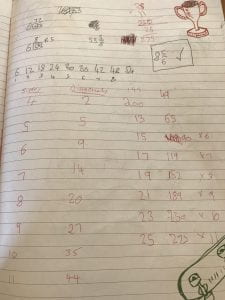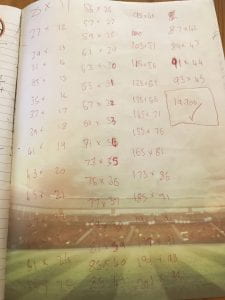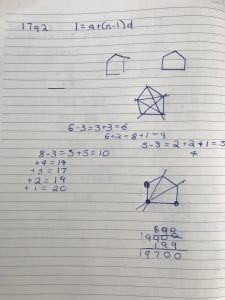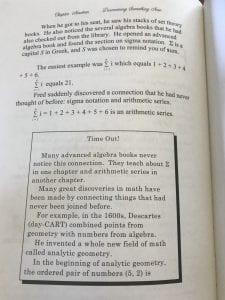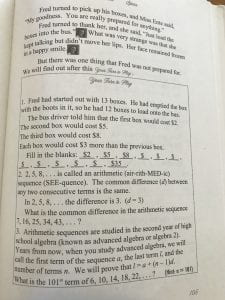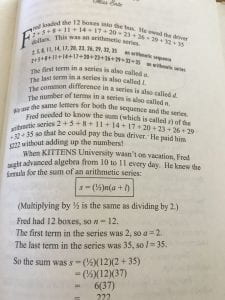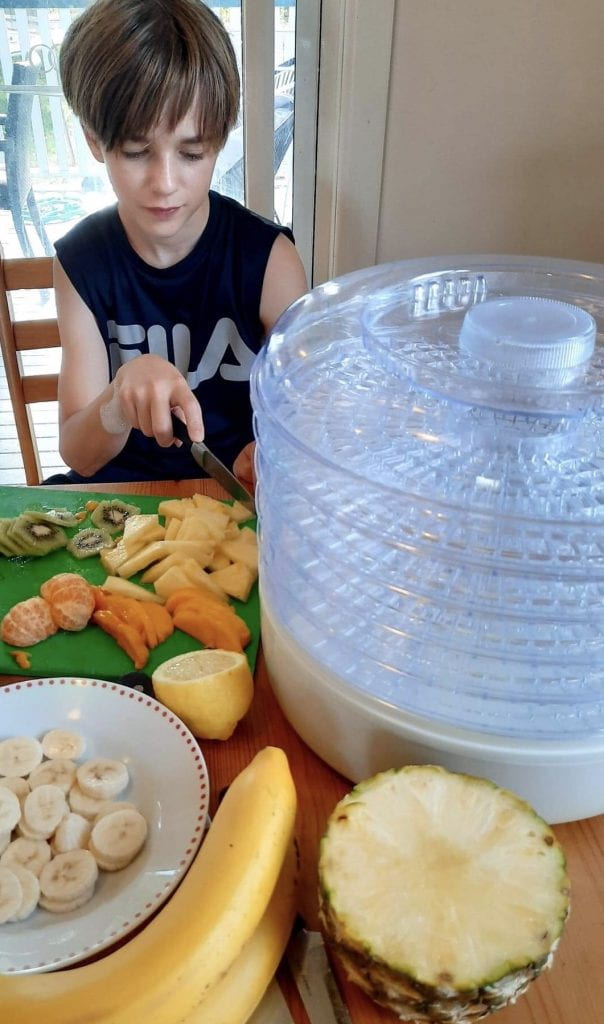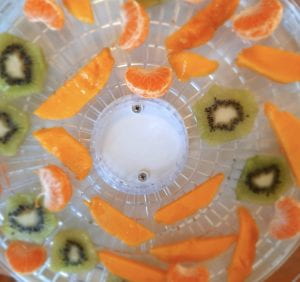The cost to run a dehydrator…useful maths
This Ted Talk video came into my feed again yesterday, ‘Why math instruction is unnecessary’. which was timely as I needed a reminder that not making my kids do hours of maths drills will not ruin their lives…in fact quite the opposite…just doing the bare minimum useful maths will mean that they won’t suffer from ‘maths anxiety’ which is what makes kids avoid maths forever after school!
He explains that deductive and inductive reasoning is what our kids should be practicing. I do have waves of doubt sometimes that my kids don’t go through thick text books of maths 🙂 But I felt pretty happy yesterday re-watching this video just after my kids had been solving a problem in their ‘Life of Fred’ book, asking them to find out how many diagonals a 200 sided polygon had. Now I doubt they will ever need to remember or ever use this fact…but in the typical Life of Fred way it was asking this question to encourage them to logically work out a way to find the answer. Here are the pages from their working out books:
- Lucas’s way to find out how many diagonals are in a 200 sided shape
The previous questions had asked how many diagonals a rectangle, a pentagon, and a hexagon had, which they worked out by drawing the shape and the diagonals. 2,5 and 9. Lucas then drew a heptagon and an octagon, and identified a pattern. He couldn’t work out how to fast track that pattern to a 200 sided shape, but he started to make a table and follow the pattern to record the number of diagonals for each shape as it increased in sides. When he got to 25 he noticed that he could safely increase his shapes in the table by 10 sides and calculate the diagonals, finally fast tracking to the conclusion that 200 x 98.5 would give him the answer he needed.
- Aurora’s way to find out how many diagonals are in a 200 sided shape
Aurora thought for a while, worked out that what she needed to find out was a value in an arithmetic series…she made a connection to a previous Fred book that had stepped the reader through a formula that students don’t normally learn till second year advanced algebra…but it was just useful for Fred at that time and fairly easy to follow…so why not? She found the Fred book she wanted, slowly worked out the figures she needed to pop into the formula, and after a few attempts finally figured it out, 19700 diagonals 🙂
- The pages taken from ‘The Life of Fred’
- ‘Kidneys’ book that steps students
- through an arithmetic series formula
They both arrived at the same correct answer, took them both a while, but they nutted it out in their own different but logical way.
But what does this have to do with dehydrators? Well the discussions in the house while we have had the dehydrator running all night experimenting for our long trail adventure, is whether it is economically worth it. The treasurer of the house (Dad) having panic attacks at how much our electricity bill is going to be next time 🙂 So I asked the kids to find out how much it costs to run a dehydrator.
They found a website that gave them a formula to calculate how much it costs to use a dehydrator.
(Wattage of appliance × Hours needed) / 1000 = Kilowatt-hour (kWh) consumption
Cost = kWh x cost per kWh
They then had to find the values to put into the formula. They had to find the wattage of our dehydrating appliance, and how much it costs us per kWh on our electric bill. Lucas found the formula, it took them both a while to find where the cost per kWh was on our electricity bill, but they found it eventually, and Aurora neatly laid the information out, calculating how much a typical 12 hour dehydrating stint would cost. Here are their calcs, working out that our machine would cost around 35cents to run for 12 hours. She also did a little additional calc working out it will cost us around $21 if we were to run the machine nightly for 2 months to pre-make lots of snacks and meals.
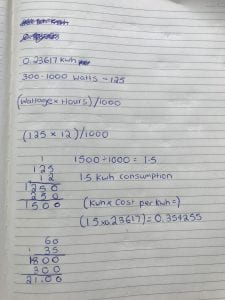
Calculations of how much it costs to run our dehydrator
What we learned:
- Definitely more cost effective by far than buying commercial dehydrated camp food, even if we were to run it every night for months making all our dinners for 3 months
- We can confidently continue to experiment knowing our treasurer won’t have a heart attack 🙂
- We can calculate anything if we can find the formula
- If we look into buying a bigger dehydrator further down the track, to take the wattage of the appliance into consideration when comparing the ones on the market, pop it into our formula and calculate the cost to run, also taking into consideration if it is bigger then it has to be run less times 🙂

